OCTOBER 28, 2022 : In 1940, the Italians asked Greece to allow Axis forces to enter Greek territory and occupy strategic locations or face war. The Greek prime minister answered “No!”. The Greeks then counterattacked and thwarted the Italian invasion. To honor this, October 28 is known as Ohi Day – Ohi meaning NO in Greek. It is a national holiday celebrated throughout the country.
In general, our plan for the day was to go to eastern Thessaloniki, where several of the large mansions that once belonged to Jewish families remain. We also wanted to see the White Tower – Thessaloniki’s iconic landmark, and walk along the waterfront.
It soon became clear that most everything we would do today, would be affected by the holiday.
First, at morning services at the Yad Lezikaron synagogue, they did not get a minyan. Several people usually come to the minyan by bus, and the buses were not running as usual today.
Knowing that buses were not running, we decided to take a taxi to the first mansion on our list. We went to the nearby taxi stop and showed the driver the Google Map details for the place – including the address and a photo of the mansion. We get in the taxi and he takes us one block away and stops at a different mansion – not where we wanted to go. We said this is not what we wanted and this time he looked at the address in greater detail and shook his head – no he would not go there. Many streets were closed for the holiday celebrations, and the villa was on the other side of town – so no. We stopped two more taxis, and both shook their heads no. It was beginning to look like we might need to find something else to do. Another taxi stopped for us, put the address into his navigation system and agreed to take us. He showed us that instead of going through the city, he would be taking us via the circular highway around the city to avoid the closed roads. This was fine and about a ½ hour (and a big tip) later, we arrived in front of our first mansion – Villa Allatini.
We were now in the suburbs of Thessaloniki – about 3 kilometers east of the city center. Here were the same apartment buildings, always with the long balconies across the front, but they were lower in height, the streets were wider and there were many, many trees. Every once in a while, instead of an apartment building there would be a fence, and behind that fence, would be a mansion surrounded by a huge garden. Some of these mansions were once the homes of the successful Jewish families of Thessaloniki. Today, they are used as government buildings, art galleries, museums, etc.
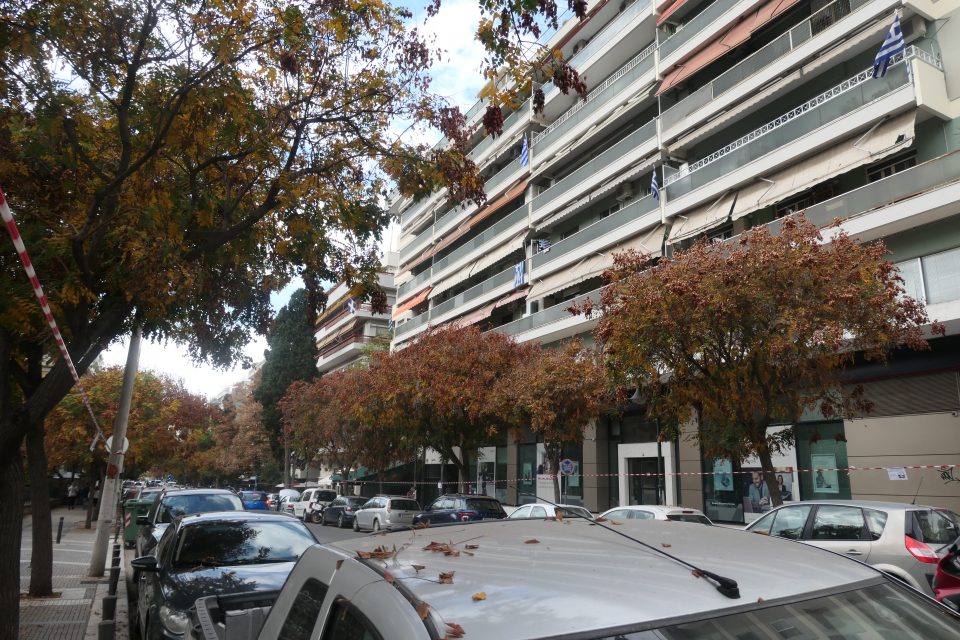
Villa Allatini was the summer residence of the Italian Jew Carlo Allatini. It was built around 1895, is about 850 square meters large and has 31 rooms. Today Villa Allatini houses the Administration of the Region of Central Macedonia. Photos do not do justice to the grandeur of the house or the setting.

The Allatini family had a flour mill, which was the first steam mill in Thessaloniki, built in 1854. When this building burnt down, they constructed a new mill that was built in 1898. Over the years, it was expanded and was considered one of the largest industrial complexes in the Balkans. Its remains are still visible today. Since then, the company changed ownership and location many times, but preserving its historic name. The abandoned factory in Thessaloniki has been declared a historical monument and there are plans for its renovation. This was our next destination.
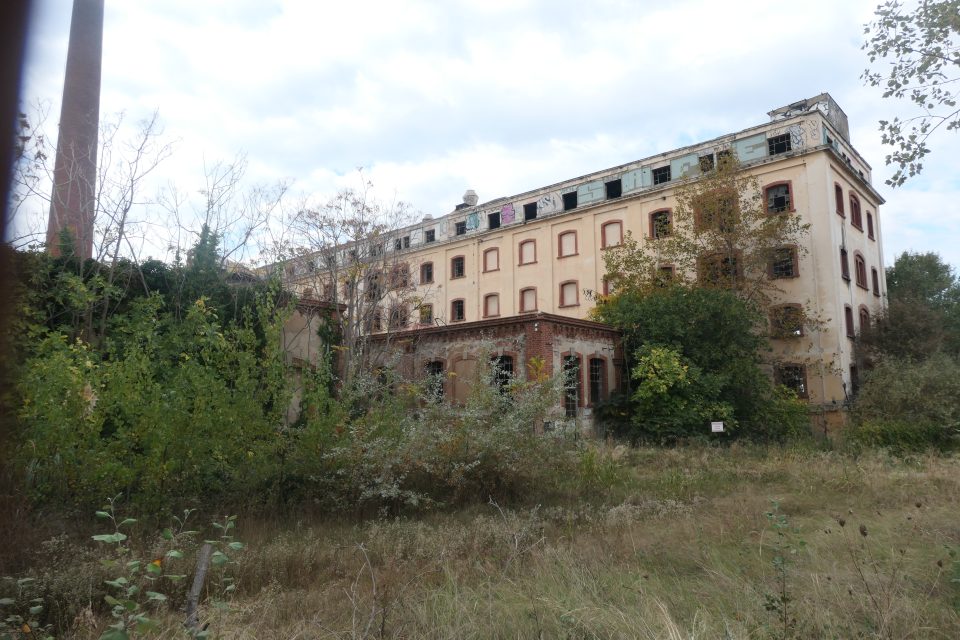
As we approached the factory, we saw in the distance, that police had closed off the street to vehicles. Many families were all walking in that direction. We assumed they were going to some sort of holiday celebration. After photographing the factory, we returned to the parallel main street – walking against the wave of people who were going to the street the factory was on. More and more people were coming.
Our next mansion was Villa Bianca, more commonly known as Casa Bianca. It was the residence for Dino Fernandez Diaz and his family, and named for his wife, Bianca. Fernandez, a Sephardic Jew, was a wealthy merchant and industrialist of the city. He and his family were murdered in1943 in Italy by German SS, as they tried to escape, Today the mansion houses the Municipal Art Gallery, that was closed due to the holiday.

As we continued walking along the main street, people were continuously coming. Security was heavy.
The next mansion we reached was Villa Mordoch. Built in 1905, it was sold in 1923 to S. Mordoch, who was its last owner. During the war it was used, among other things, as a home for displaced children. Today it houses various public institutions.
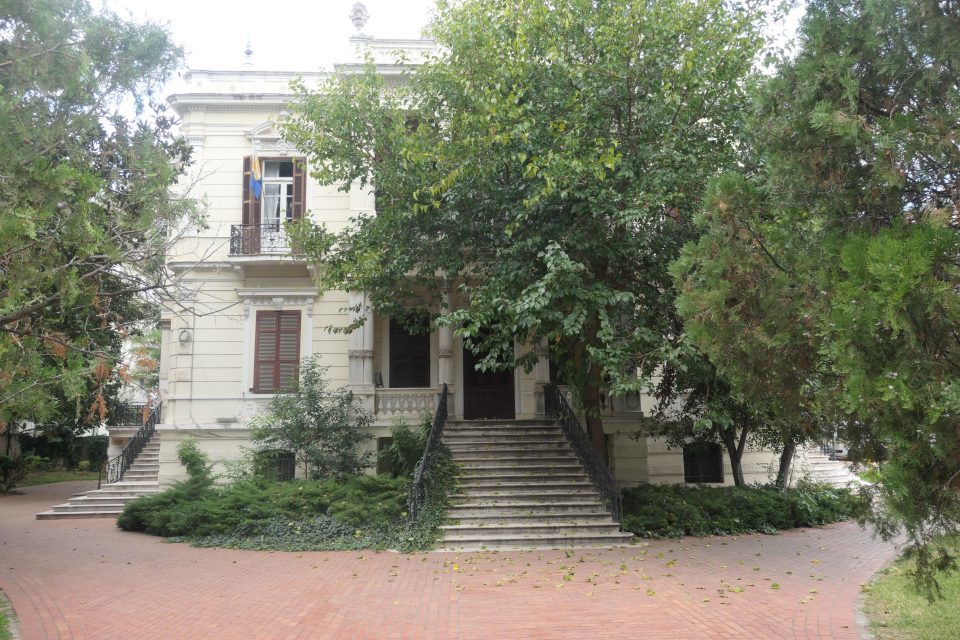
Just a short distance farther, we came to Villa Kapandji, home of Mehmed Kapanci, a prominent textile merchant and banker. He belonged to the Dönmeh sect, who were a group of crypto-Jews in the Ottoman Empire who converted outwardly to Islam but retained their Jewish faith and Kabbalistic beliefs in secret. They were followers of the false messiah Sabbatai Zevi. The house was built by Kapanci in 1895 to house his family. In 1912, when Thessaloniki became part of Greece, it was the home of the military commander of Greece. During the war, this mansion became the headquarters of the German Gestapo. Today it is home of the Hellenic Literal and Historical Archive.
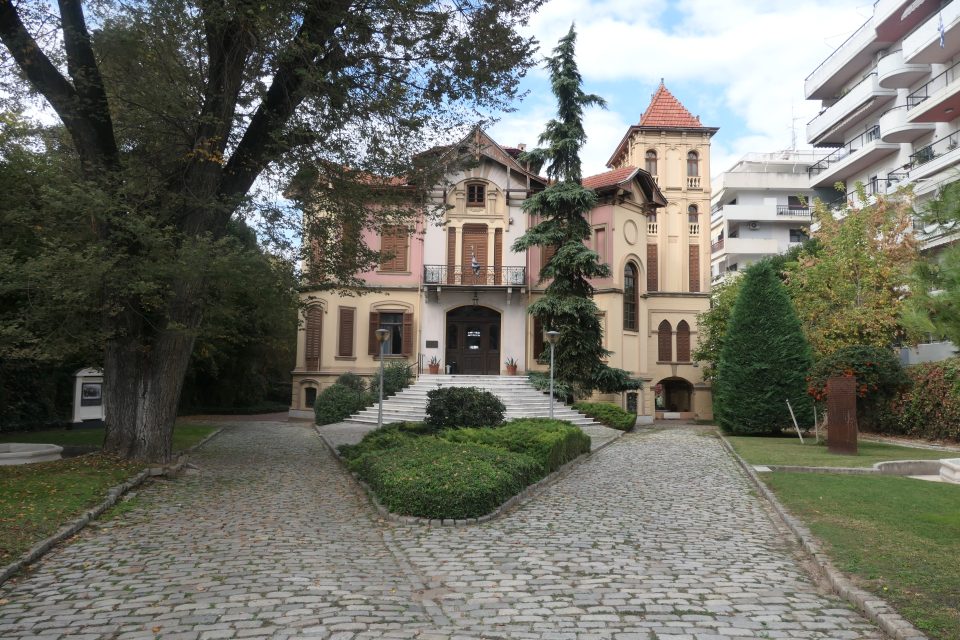
The next villa on our list was the Villa Modiano, as in the Modiano Market that we saw on our first day in Thessaloniki. The villa and its grounds take up a full city block, from the main street we were walking on to the parallel street where the factory was located. As we approached the villa, we heard loud noises. Looking down towards the parallel street, we saw people packed many deep along the road, as military equipment rolled by. Turns out, in Greece they celebrate Ohi day with military parades – Soviet style. We watched as tanks, armed personal carriers, missiles, satellite dishes, and more rolled by. When a truck with many soldiers drove past, the audience cheered. Children were waving Greek flags. It was a proud holiday atmosphere.
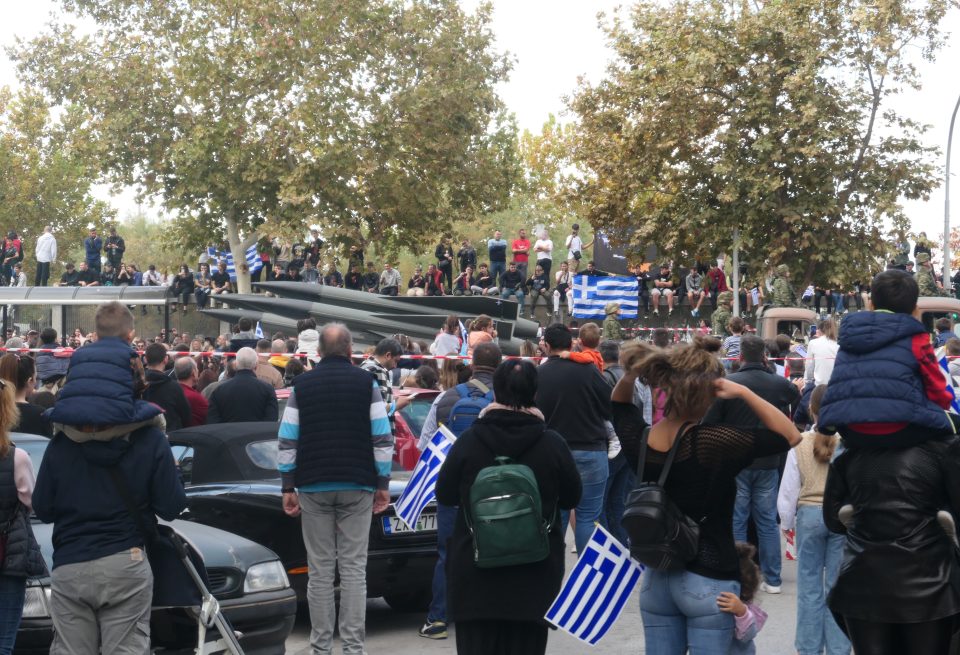
In order to get a better view of the parade, many people were standing on the villa. The villa today houses the Folklife & Ethnological Museum. On its grounds, is a restaurant.
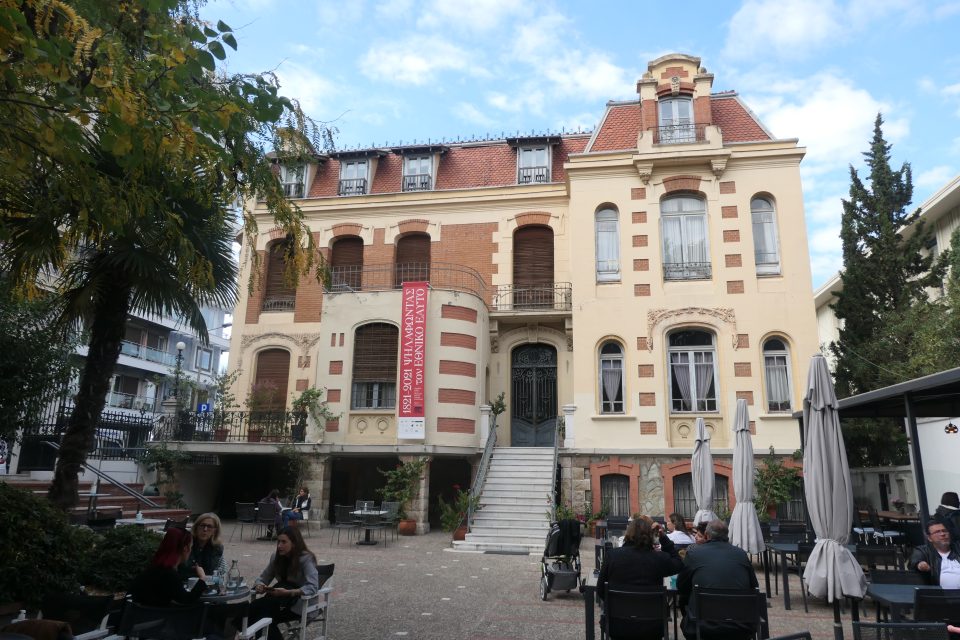
It was then a short walk to Yeni Camii, also known as the New Mosque. By then, the parade was mostly over, and the sidewalks were jammed full of people returning to their cars. The mosque was luckily on a side street without so many people. We found a bench and had our sandwich lunch. As we were eating, the military planes started flying very loudly overhead, just like the celebrations on Wednesday. It was impossible to photograph, they passed by too quickly.
Yeni Camii was built in 1902, funded by the Dönmeh to serve their religious needs. In 1923, there was a population exchange between Greece and Turkey involving about 1.6 million people, mostly who were forcefully relocated. Muslims in Greece were resettled in Turkey, and Greek Orthodox Christians in Turkey were moved to Greece. The Dönmeh in Greece where sent to Turkey, and the mosque, no longer in use, became the Archeological Museum of Thessaloniki for several years. Today it hosts cultural activities of the Thessaloniki municipality.
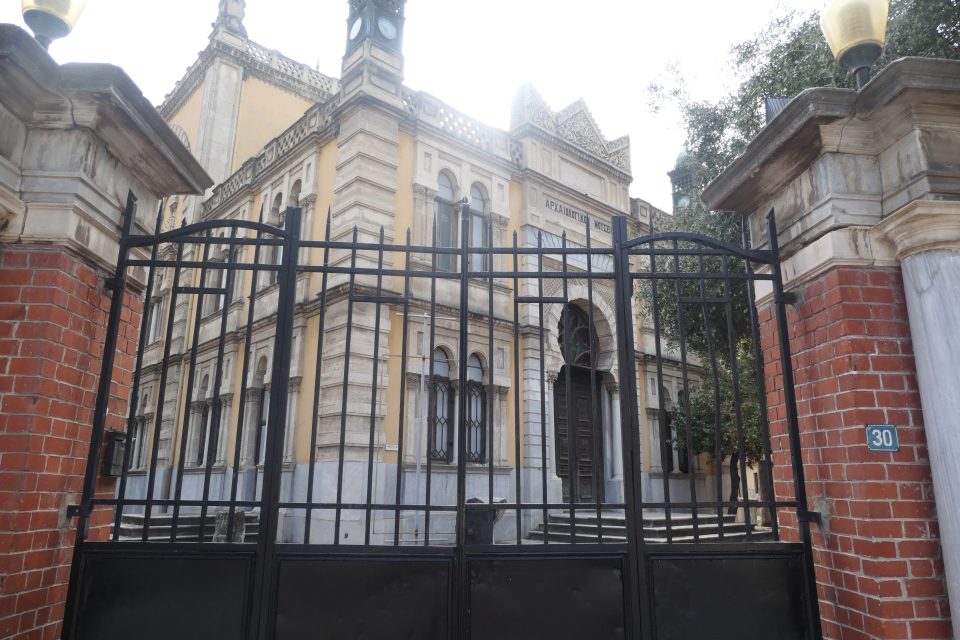
One thing that impressed me as we wandered among these mansions, was the informational signs set up by the municipality. Most of the villas we went to, had signage that gave a brief explanation about the place – both in Greek and English, and often with historic photos. This added so much – much more than just looking at a building.
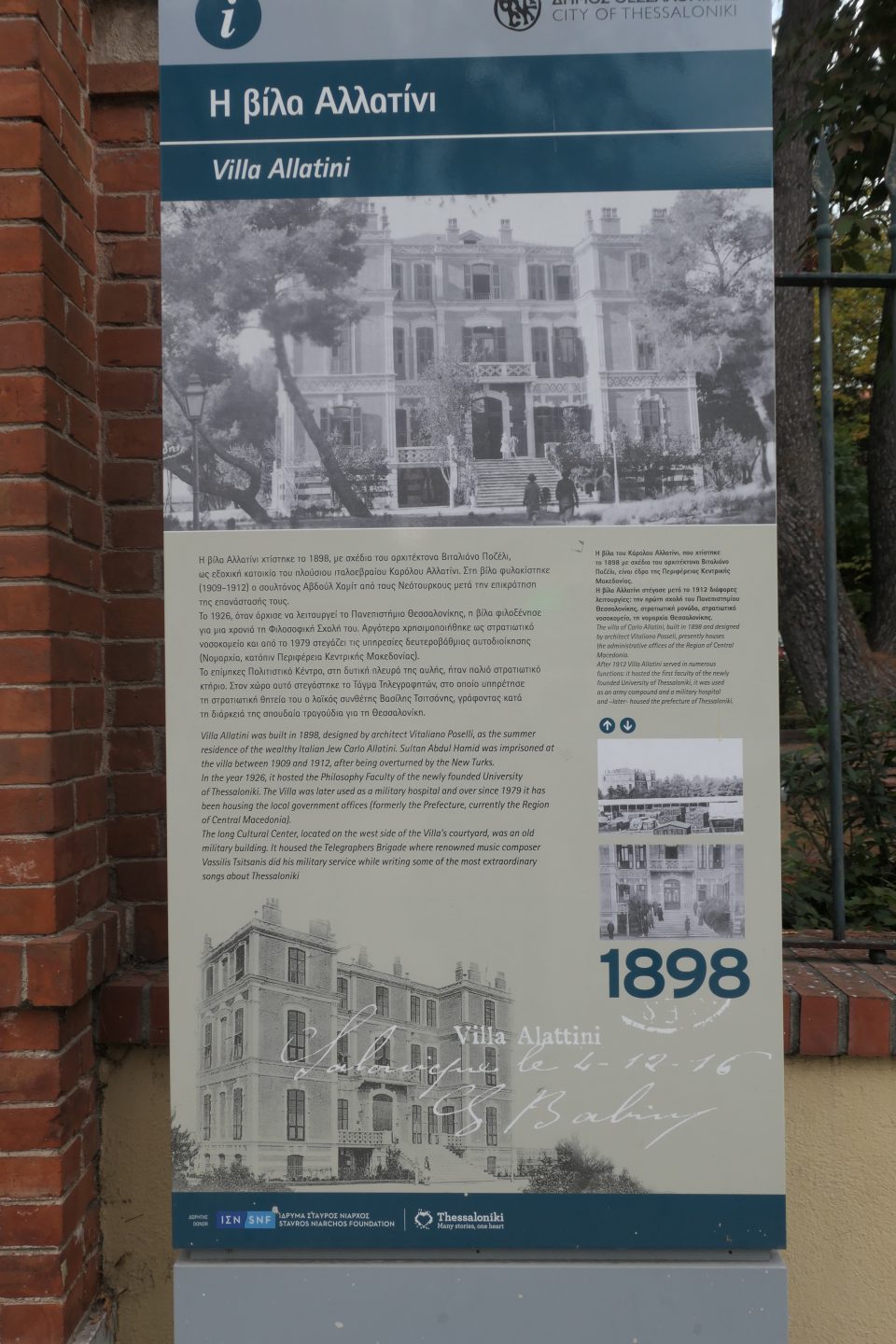
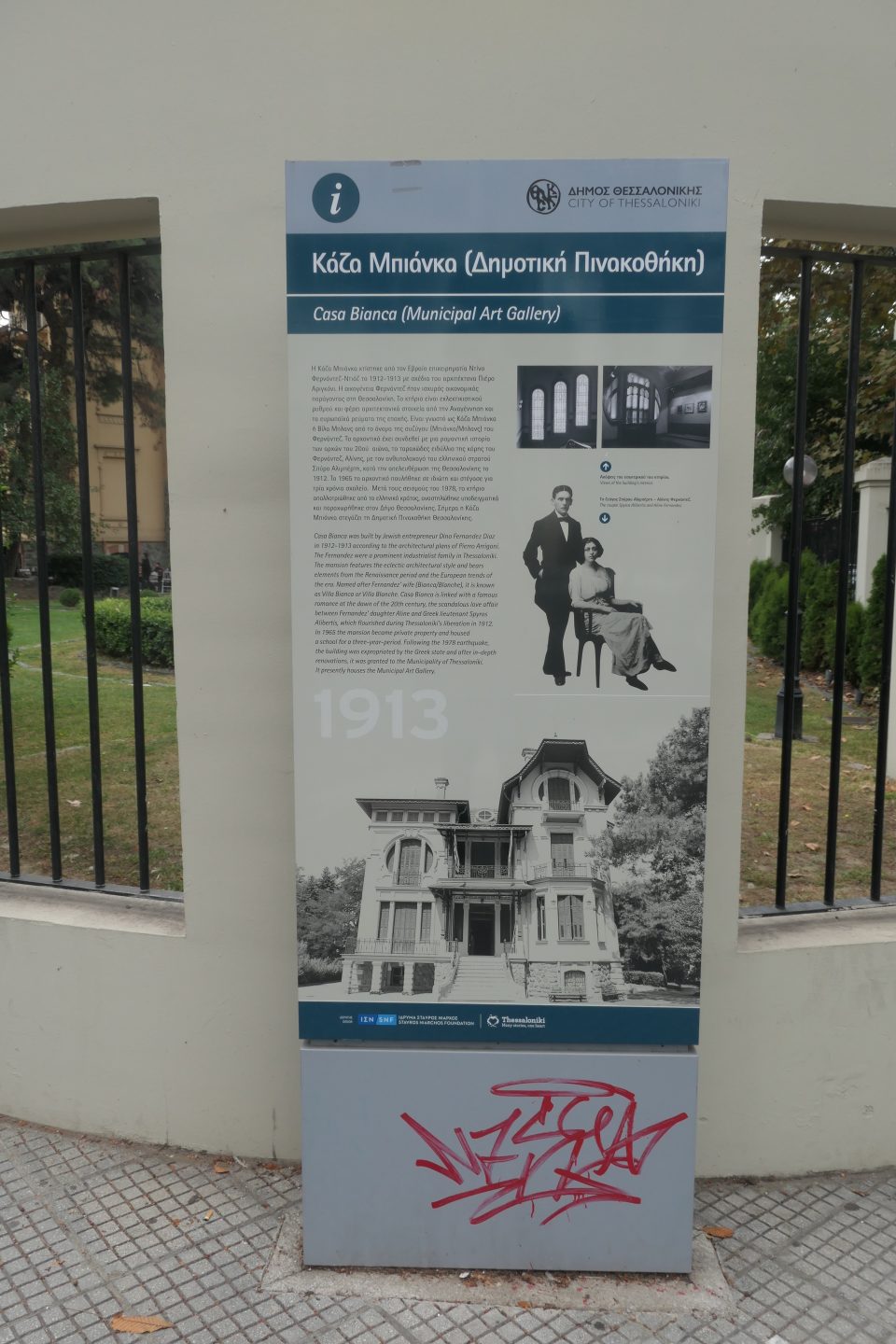
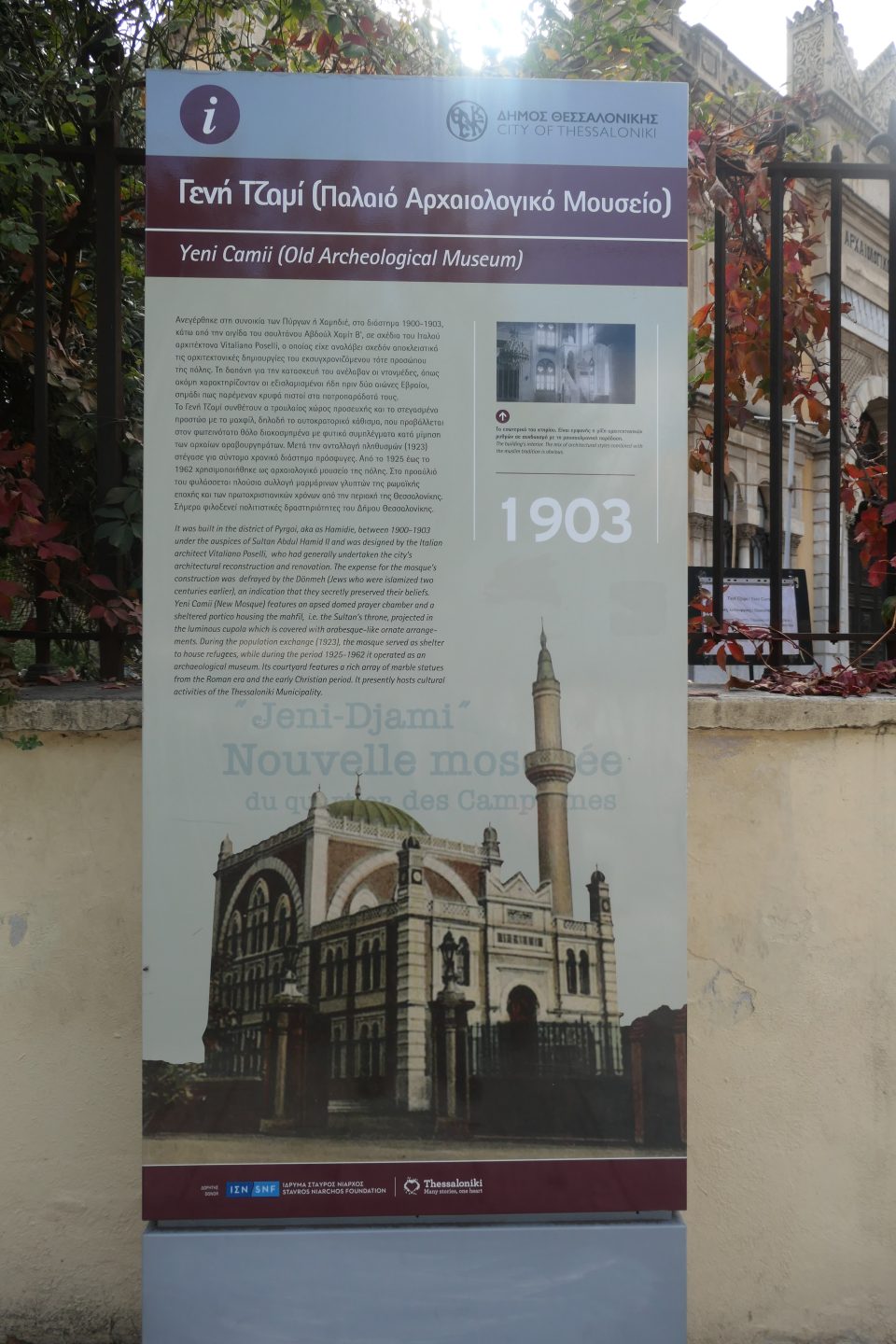
Our next stop was the current Archeological Museum. We had originally planned to buy tickets in advance for Saturday, but the museum was free today because of the holiday. The museum was packed with families, teaching their children about the history they were seeing.
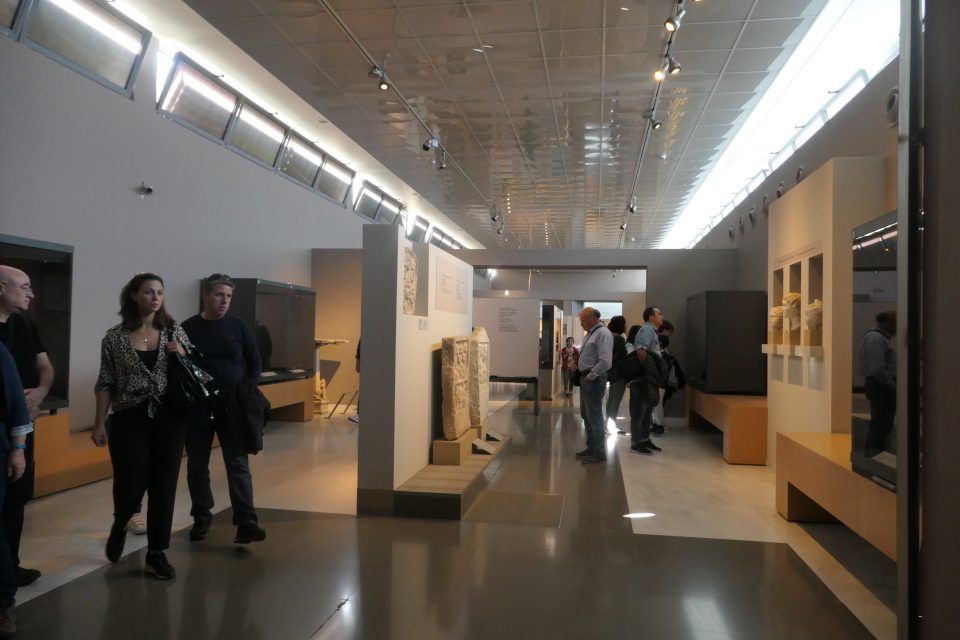
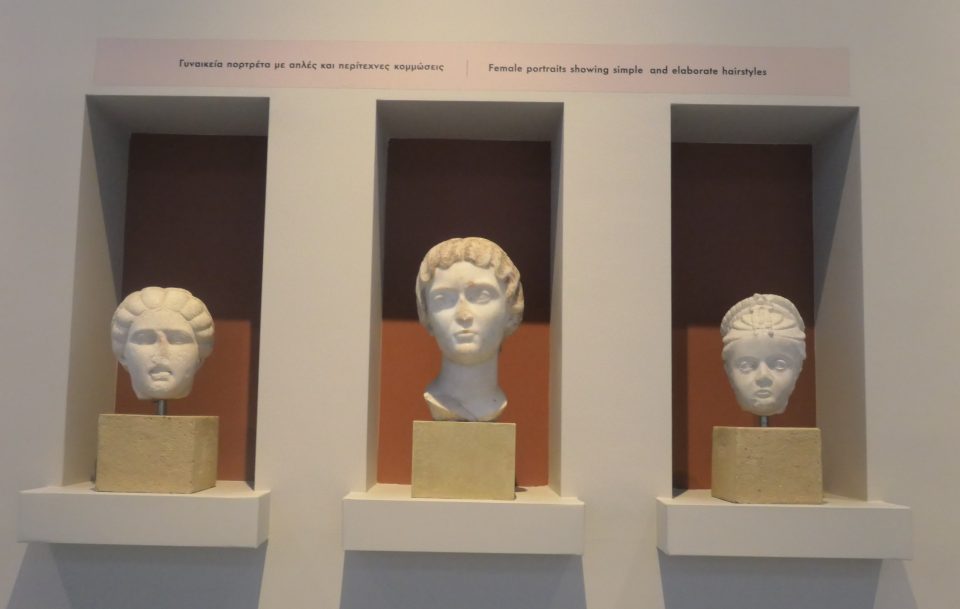

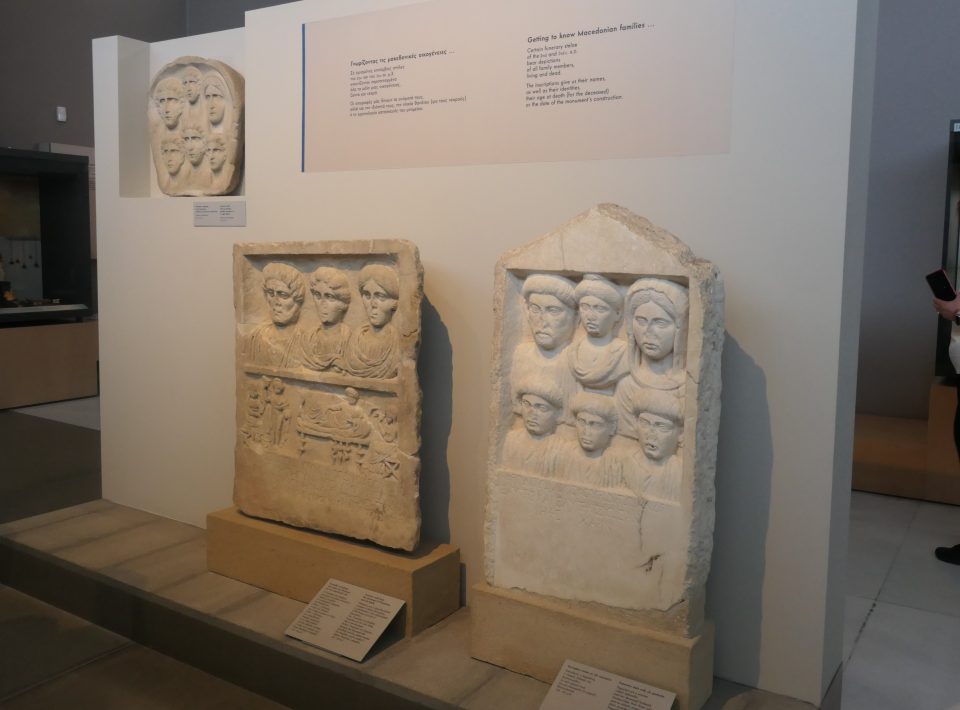
The next destination was the White Tower, a short distance away. As we crossed the street, we heard Greek dance music. There were dozens of people, many in traditional costume, dancing Greek folk dances. It was enchanting.
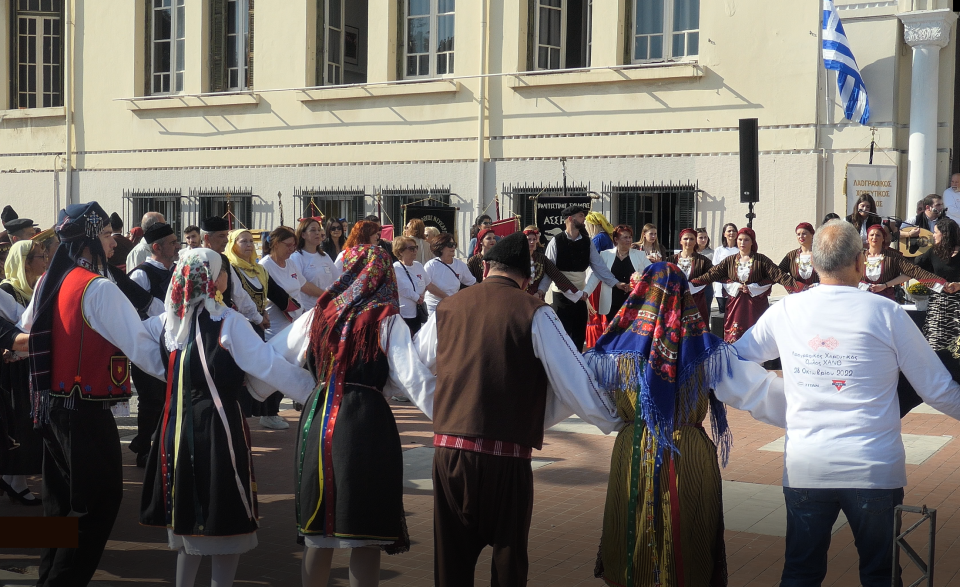
The grounds surrounding the White Tower were crowded. When you see a promotional photo for Thessaloniki, it often includes a photo of the White Tower sitting along the waterfront. The current tower was built by the Ottomans, and served as a fortress, garrison and a prison. Because of the countless executions which were done there, it acquired the name “Tower of Blood” or “Red Tower”. In 1890, a convict whitewashed the building in exchange for his freedom, and from then it is known as the “White Tower”.
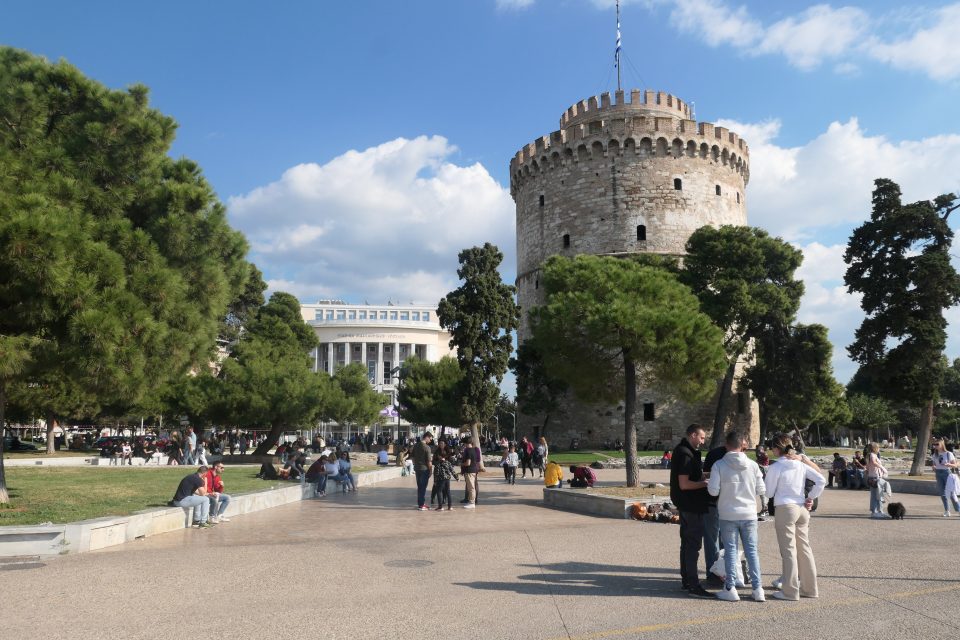
It was getting late, we still needed to prepare for Shabbat, so we did not go up the tower. We walked along the waterfront, and then headed back to our apartment. On the way, we stopped at a vegan restaurant to pick up some food for lunch tomorrow. Not sure why a vegan restaurant would call itself Tarantula.
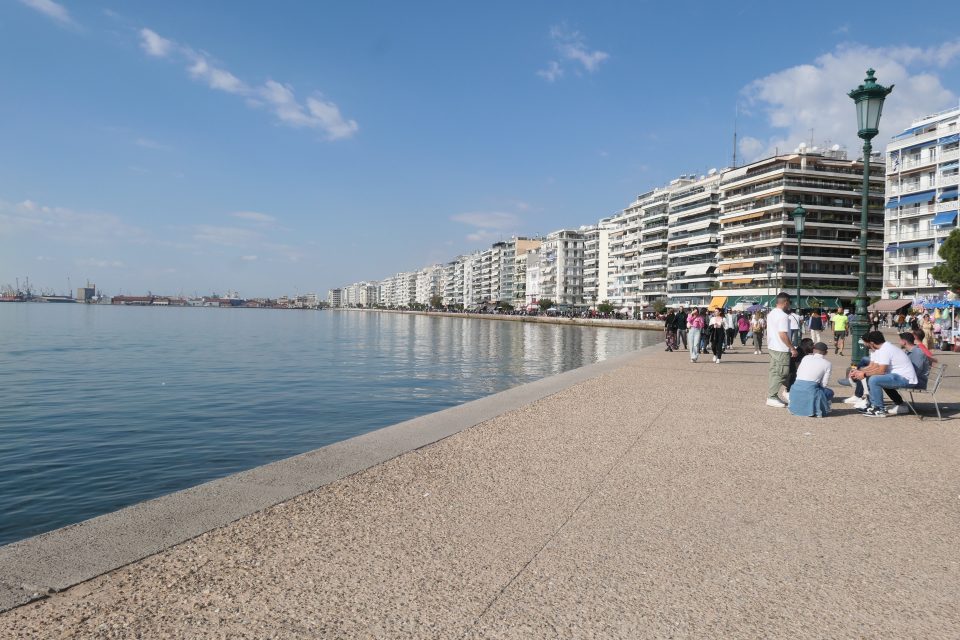
That evening, Mark returned to Yad Lezikaron synagogue for Friday night services. They were hosting a group of 30 people from Chicago. He returned from shul, we had our Shabbat meal, and then went to sleep, thankful for an interesting day.
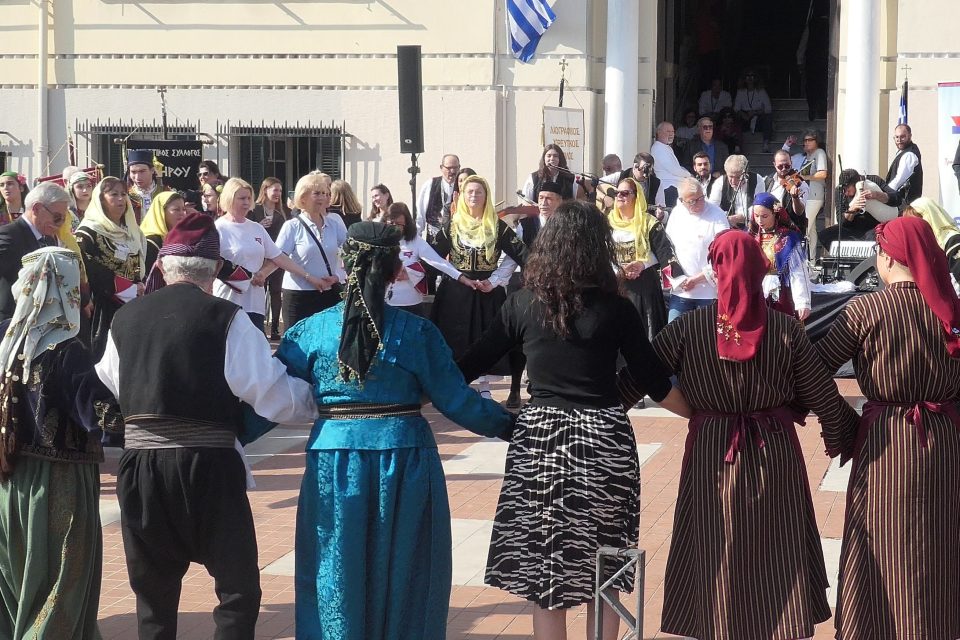
What I love about these informative blog posts is that they read like detective thrillers—- how will it end, and what was the true origin of a home?
Sounded like it was definitely a ‘no’ day for your plans!
Very interesting stories about the villas
Sounds like a fun day, miss you .
Great explanations and photos!
Wow such an interesting city!